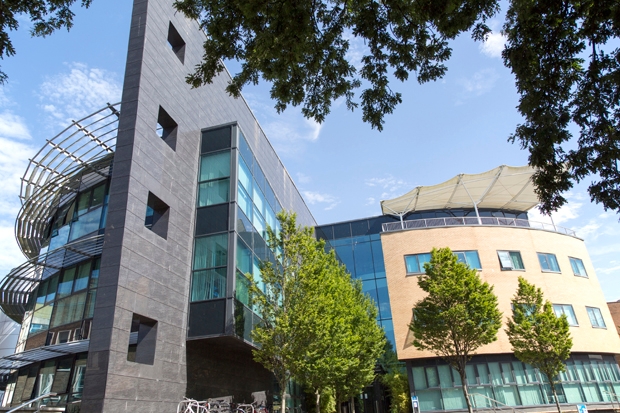Town halls and unringfenced government departments are feeling the pinch, but one corner of British public life is conspicuously flush. Visit almost any university in the land and you will find a small city bursting with Portakabins, scaffolding and cranes. If you dare to raise your eyes from the mud puddles, you will see vast hoardings displaying images of glass palaces.
Higher education is in the throes of its biggest building boom since the 1960s. Whether it is wise or not, whether the financial and academic calculations add up, are questions rarely asked, so loud is the self-congratulation of those pioneering the expansion.
University College London recently clinched what has been described as the biggest loan in British university history (from the European Investment Bank, as it happens) to help fund a new campus in east London. Imperial College, King’s and University of the Arts London are well into building mode, while four in five universities outside the capital are reported to have plans to increase capital spending. The University of Swansea has just opened a smart new riverside campus at a cost of almost half a billion pounds. Pretty much everyone involved with higher education is loving it. There is nothing like a big construction project to get the juices flowing.
But consider who is not running with the herd. Oxford, Cambridge, Warwick and Manchester have no plans for increased intake. Would not many more people benefit from an Oxbridge education? Perhaps. But we are talking about universities, where individual merit and institutional standards are presumably worth something. Some universities have already reduced entrance requirements and it is hard to see how others can increase admissions without lowering standards.
Then there are the finances. The rise in tuition fees to a maximum £9,000 a year for UK and EU students, which every institution promptly imposed, provided more funds. When this is coupled with the flexibility to admit as many students as they like, from wherever they like, to whatever courses they like, the sums can be made to add up. But most universities have also taken out loans, largely on the promise of fee, endowment and research income for a generation or more to come. What if interest rates rise? What if the projected increase in student numbers is not realised? What if the government calls time on current student-loan arrangements? With a surfeit of graduates and many graduate jobs paying less, the latest estimates suggest almost half of student loans will not be repaid. The whole model looks shaky at best.
The favoured solution is to increase the proportion of overseas students, who pay higher, often much higher, fees. The result, where at some universities one in three undergraduates and half of postgraduates come from outside the EU, is hailed as glorious evidence that the UK is at the forefront of educational globalisation. But the argument assumes that growth is of itself good. More students means more fees, but it also brings a need for more teachers, more facilities, more accommodation. So unless quality is sacrificed, the chase for recruits, the fundraising and mortgaging must go on and on.
Which is where the further risks begin. How soon will it be before overseas students baulk at subsidising the rest and ask what happened to the uniquely British university experience? Or aspiring UK students start to resent the apparent preference given to high payers from abroad? How long before some courses are run with few, or no, UK students? Whose future elite will we, should we, be educating?
What about grade inflation in establishments keen to demonstrate their competitive edge? Trophy buildings paid for by dodgy donations? Vice-chancellors and others swanning around Asia, banging the drum for their universities and awarding themselves huge pay rises because they are now marketing executives as much as academics?
One day, this bubble has to burst. Whether it will be because the demand from overseas declines, or because more UK students reject a degree as not worth the money, because too many loans remain unpaid, or because overambitious construction projects go wrong, the dangers are apparent.
Much of UK higher education seems in thrall to the idea that bigger is better. It is worth pondering, though, what will happen to all those gleaming palaces when it turns out, as it surely must, that excellence and reputation can be spread too thin.






Comments